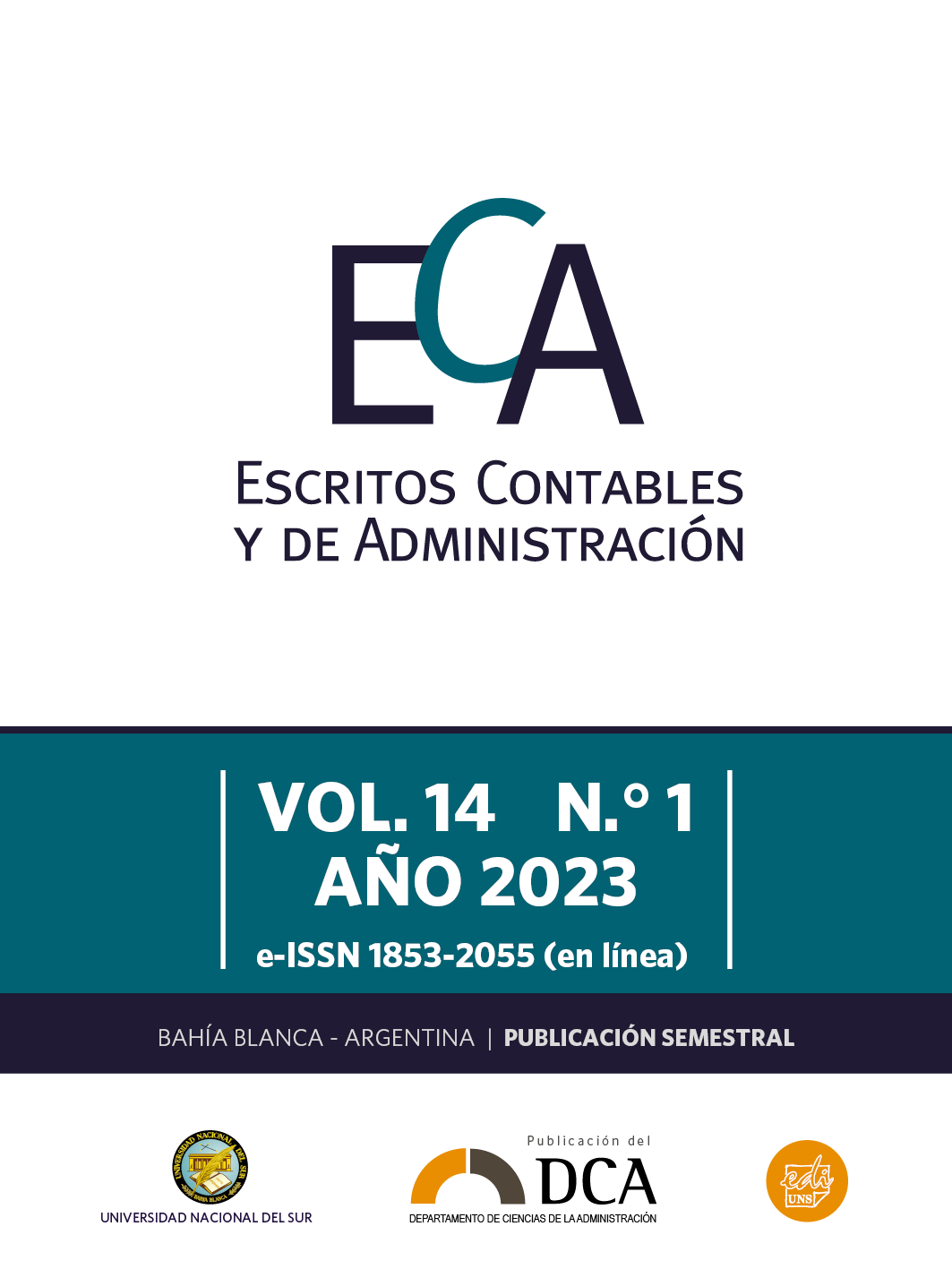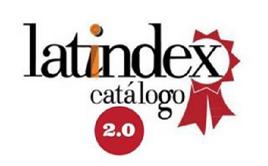Develando el proceso editorial: sugerencias y estrategias para la publicación exitosa en revistas científicas
DOI:
https://doi.org/10.52292/j.eca.2023.4162Palabras clave:
escritura académica, trabajo de investigación, revistas científicas, comunicación de la cienciaResumen
La publicación de trabajos científicos en revistas es importante para los autores por diversas razones, como la validación de los trabajos, la difusión del conocimiento generado y el desarrollo profesional. En este artículo, analizamos las etapas del proceso editorial y presentamos sugerencias para superar con éxito dicho proceso. Con estos propósitos en mente, organizamos este documento en tres partes. Primero, a partir del proceso científico, describimos brevemente la estructura de un artículo científico. Segundo, presentamos un breve esquema de actividades y precauciones a seguir mientras se planifica y se escribe el artículo. Tercero, abordamos el enfoque en la redacción o escritura como elemento esencial en la construcción de la historia del artículo. El resultado y la contribución de este documento están especialmente dirigidos a jóvenes estudiantes e investigadores, en tanto busca mejorar sus investigaciones y la calidad de sus manuscritos, de manera que puedan comunicar sus hallazgos de manera accesible y comprensible para todos.
Descargas
Citas
Acedo, F., Barroso, C., Casanueva, C. y Galán, J. (2006). Co-authorship in management and organizational studies: An empirical and network analysis. Journal of Management Studies, 43(5), 957-983. https://doi.org/10.1111/j.1467-6486.2006.00625.x
Ahlstrom, D. (2010). Clearing the first hurdle as the Asia Pacific Journal of Management. Asia Pacific Journal of Management, 27(2), 171-177. https://doi.org/10.1007/s10490-010-9202-z
Armstrong, J. (1997). Peer review for journals: Evidence on quality control, fairness, and innovation. Science and Engineering Ethics, 3(1), 63-84. https://doi.org/10.1007/s11948-997-0017-3
Barabási, A.; Jeong, H.; Néda, Z.; Ravasz, E.; Schubert, A. & Vicsek, T. (2002). Evolution of the social network of scientific collaborations. Physica A, 311(3), 590-614. https://doi.org/10.1016/s0378-4371(02)00736-7
Barnett, A., Ault, R. y Kaserman, D. (1988). The rising incidence of co-authorship in Economics: Further evidence. The review of Economics and Statistics, 70(3), 539-543. https://doi.org/10.2307/1926798
Bedeian, A. (2004). Peer review and the social construction of knowledge in the management discipline. Academy of Management Learning y Education, 3(2), 198-216. https://doi.org/10.5465/amle.2004.13500489
Beyer, J., Chanove, R. & Fox, W. (1995). The review process and the fates of manuscripts submitted to the AMJ. Academy of Management Journal, 38(5), 1219-1260. https://doi.org/10.5465/256856
Bono, J., y McNamara, G. (2011). Publishing in AMJ – Part 2: Research design. Academy of Management Journal, 54(4), 657-660. https://doi.org/10.5465/amj.2011.64869103
Booth, W., Colomb, G. y Williams, J. (2003). The craft of research. Chicago, IL: University of Chicago Press.
Byrne, D. (2000). Common reasons for rejecting manuscripts at medical journals: A survey of editors and peer reviewers. Science Editor, 23(2), 39-44.
Colquitt, J., y George, G. (2011). Publishing in AMJ – Part 1: Topic choice. Academy of Management Journal, 54(3), 432-435. https://doi.org/10.5465/amj.2011.61965960
Craig, J. (2010). Desk rejection: How to avoid being hit by a returning boomerang. Family Business Review, 23(4), 306-309. https://doi.org/10.1177/0894486510386024
Dahdouh-Guebas, F., Ahimbisibwe, J., Van Moll, R., & Koedam, N. (2003). Neo-colonial science by the most industrialised upon the least developed countries in peer-reviewed publishing. Scientometrics, 56(3), 329-343. https://doi.org/10.1023/a:1022374703178
Elson, P. y Broudard, F. (2012). Advice for new authors on the submission of articles. Canadian Journal of Nonprofit and Social Economy Research, 3(1), 79–91. https://doi.org/10.22230/cjnser.2012v3n1a112
Feldman, D. (2004). The devil is in the details: Converting good research into publishable articles. Journal of Management, 30(1), 1-6. https://doi.org/10.1016/j.jm.2003.09.001
Ferreira, M. (2013). Comentário editorial: O processo editorial: Da submissão à rejeição (ou aceite). Revista Ibero Americana de Estratégia, 12(3), 1-11. https://doi.org/10.5585/riae.v12i3.2042
Flaherty, F. (2009). The elements of story. New York, NY: HarperCollins.
Frey, B. (2003). Publishing as prostitution? Choosing between one's own ideas and academic success. Public Choice, 116(1-2), 205-223. https://doi.org/10.1007/978-3-540-79247-5_45
Gans, J. & Shepherd, G. (1994). How are the mighty fallen: Rejected classic articles by leading economists. Journal of Economic Perspectives, 8(1), 165-179. https://doi.org/10.1257/jep.8.1.165
Geletkanycz, M. y Tepper, B. (2012). Publishing in AMJ – Part 6: Discussing the implications. Academy of Management Journal, 55(2), 256-260. https://doi.org/10.5465/amj.2012.4002
Gondim, S. (2004). A face oculta do parecerista: Discussões éticas sobre o processo de avaliação de mérito de trabalhos científicos. Organizações e Sociedade, 11(31), 195-199. https://periodicos.ufba.br/index.php/revistaoes/article/view/10716
Grant, A., y Pollock, T. (2011). Publishing in AMJ – Part 3: Setting the hook. Academy of Management Journal, 54(5), 873-879. https://doi.org/10.5465/amj.2011.4000
Green, B., & Johnson, C. (2006). How to Write a Case Report for Publication. Journal of Chiropractic Medicine, 2(5), 72-82. https://doi.org/10.1016/s0899-3467(07)60137-2
Gunning, R. (1952). The technique of clear writing. McGraw-Hill.
Hale, C. (1999). Sin and syntax: How to craft wickedly effective prose. New York, NY: Three Rivers.
Huff, A. (1999). Writing for scholarly publication. Thousand Oaks, CA: Sage.
Lamott, A. (1994). Bird by bird: Some instructions on writing and life. New York, NY: Anchor.
Levy, M. & Grewal, D. (2007). Publishing perspectives from the editors. Journal of Retailing, 83(3), 247-252. https://doi.org/10.1016/j.jretai.2007.06.001
Mascarenhas, A., Zambaldi, F. & de Moraes, E. (2011). Rigor, relevância e desafios da academia em Administração: Tensões entre pesquisa e formação profissional. Revista de Administração de Empresas, 51(3), 265-279. https://doi.org/10.1590/s0034-75902011000300007
Miller, C. (2006). Peer review in the organizational and management sciences: Prevalence and effects of reviewer hostility, bias, and dissensus. Academy of Management Journal, 49(3), 425-431. https://doi.org/10.5465/amj.2006.21794661
Mitchell, T., y James, L. (2001). Building better theory: Time and the specification of when things happen. Academy of Management Review, 26(4), 530-547. https://doi.org/10.5465/amr.2001.5393889
Moody, J. (2004). The structure of a social science collaboration network: Disciplinary cohesion from 1963 to 1999. American Sociological Review, 69(2), 213-238. https://doi.org/10.1177/000312240406900204
Pinho, J. (2005). Brevíssimo manual do editor: Considerações sobre submissão e avaliação de artigos, o papel dos pareceristas e do editor de revistas científicas. Organizações e Sociedade, 12(34), 169-173. https://periodicos.ufba.br/index.php/revistaoes/article/view/10798
Pollock, T. y Bono, J. (2013). Being Scheherazade: The importance of storytelling in academic writing. Academy of Management Journal, 56(3), 629-634. https://doi.org/10.5465/amj.2013.4003
Radford, D., Smillie, L., Wilson, R. y Grace, A. (1999). Scientific publishing: The criteria used by editors of scientific dental journals in the assessment of manuscripts submitted for publication. British Dental Journal, 187(7), 376-379. https://doi.org/10.1038/sj.bdj.bdj0284a
Raelin, J. (2008). Refereeing the game of peer review. Academy of Management Learning & Education, 7(1), 124-129. https://doi.org/10.5465/amle.2008.31413869
Ragins, B. (2012). Editor's comments: Reflections on the craft of clear writing. Academy of Management Review, 37(4), 490-501. https://doi.org/10.5465/amr.2012.0165
Reuber, A. (2010). Strengthening your literature review. Family Business Review, 23(2), 105-108. https://doi.org/10.1177/089448651002300201
Rutledge, R. y Karim, K. (2009). Determinants of coauthorship for the most productive authors of accounting literature. Journal of Education for Business, 84(3), 130-134. https://doi.org/10.3200/joeb.84.3.130-134
Sguissardi, V. & Silva Jr., J. (2009). Trabalho intensificado nas federais: Pós-graduação e produtivismo acadêmico. Xamã. https://doi.org/10.29388/978-85-53111-16-9
Silva, P. (2007). How to write a lot. Washington DC: American Psychological Association.
Singh, J. (2003). A reviewer’s gold. Journal of the Academy of Marketing Science, 31(3), 331-336. https://doi.org/10.1177/0092070303031003013
Sparrowe, R. y Mayer, K. (2011). Publishing in AMJ – Part 4: Grounding hypotheses. Academy of Management Journal, 54(6), 1098-1102. https://doi.org/10.5465/amj.2011.4001
Strunk, W. y White, E. (2000). The elements of style. Boston, MA: Allyn y Bacon.
Sutton, R. y Staw, B. (1995). What theory is not. Administrative Science Quarterly, 40(3), 371-384. https://doi.org/10.2307/2393788
Swanson, E. (2004). Publishing in the majors: A comparison of Accounting, Finance, Management and Marketing. Contemporary Accounting Research, 21(1), 223-255. https://doi.org/10.1506/rckm-13fm-gk0e-3w50
Weick, K. (1999). Theory construction as disciplined reflexivity: Tradeoffs in the 90s. Academy of Management Review, 24(4), 797-806. https://doi.org/10.5465/amr.1999.2553254
Whetten, D. (1989). What constitutes a theoretical contribution? Academy of Management Review, 14, 490-495. https://doi.org/10.5465/amr.1989.4308371
Williams, J., y Colomb, G. (2010). Style: Lessons in clarity and grace. (10th ed.). New York, NY: Pearson Education.
Zhang, Y., y Shaw, J. (2012). Publishing in AMJ – Part 5: Crafting the methods and results. Academy of Management Journal, 55(1), 8-12. https://doi.org/10.5465/amj.2012.4001
Zinsser, W. (2006). On writing well: The classic guide to writing nonfiction. New York, NY: HarperCollins.
Publicado
Cómo citar
Número
Sección
Licencia
Derechos de autor 2023 Isabel Cristina Scafuto

Esta obra está bajo una licencia internacional Creative Commons Atribución-NoComercial 4.0.
Aviso de derechos de autor
Aquellos autores/as que tengan publicaciones con esta revista, aceptan los términos siguientes:
- Los autores/as conservarán sus derechos de autor y garantizarán a la revista el derecho de primera publicación de su obra, el cual estará simultáneamente sujeto a la licencia Atribución-No Comercial 4.0 Internacional CC BY-NC 4.0.
- Los autores/as podrán adoptar otros acuerdos de licencia no exclusiva de distribución de la versión de la obra publicada (p. ej.: depositarla en un archivo telemático institucional o publicarla en un volumen monográfico) siempre que se indique la publicación inicial en esta revista.
- Se permite y recomienda a los autores/as difundir su obra a través de Internet (por ej.: en páginas web institucionales o personales) una vez publicado su trabajo, lo cual puede producir intercambios interesantes y aumentar las citas de la obra publicada (Véase El efecto del acceso abierto).





















